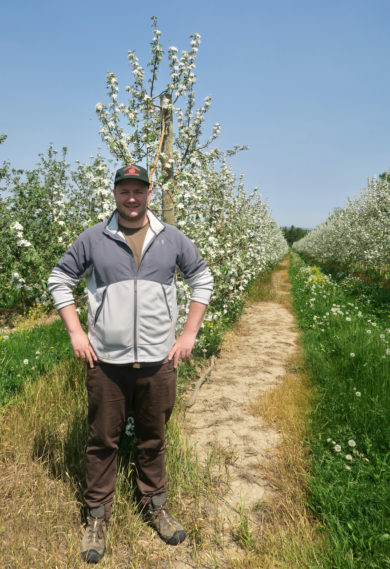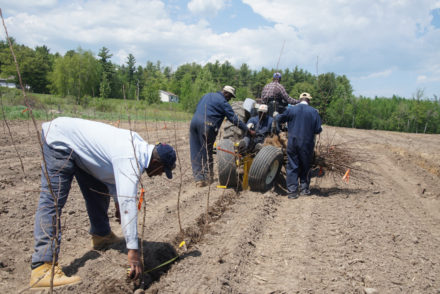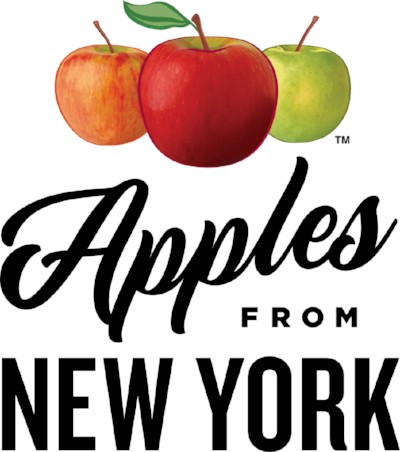“It’s a challenge deciding what to plant in the modern orchard.”

Jesse Mulbury and blossoming SnapDragon trees.

Planting Honeycrisp, SnapDragons, Gala and Evercrisp. 1260 trees per acre. Small trees double the yield and are much safer for pickers. The trees should be productive in 3 to 5 years.
By John T. Ryan
Peru, NY takes great pride in its agricultural heritage. Our hamlet is surrounded by dairy farms and orchards. Over the past several years Peru residents have witnessed huge changes in the dairy industry as small farms shut down and large farms add acreage. The apple industry is also undergoing significant changes.
Jesse Mulbury, co-owner of Northern Orchard, is very familiar with the changes. He’s chairman of the New York State Apple Association, an organization that promotes New York apples on behalf of about 600 growers. The association’s growers produce 30 to 34 million 40-pound boxes of fruit annually, making New York our nation’s second-largest apple-producing state after the State of Washington. Northern Orchards alone sells more than 200,000 boxes each year.
Consumers, of course, drive most change. Mulbury explained, “When our orchards started, we grew virtually 100% McIntosh apples. From the 1950s to the 1980’s Red Delicious, Macoun, Cortland, and Empires grew in popularity. In the 1990s, it was Galas and Fuji, but the most exciting thing over the past few years has been the Honeycrisp. People, especially kids, love the Honeycrisp’s sweet, slightly tart taste.” While Northern Orchard still harvests millions of McIntosh apples, its percentage has changed from 100% to 66%. Today, when the Mulburys plant new trees, Honeycrisp are almost always included.
Several of the new apple varieties are called “managed” varieties. For example, researchers at Cornell University developed the SnapDragon and RubyFrost. Planting those varieties is restricted to New York growers. Other universities and growers have developed varieties such as SweetTango, Jazz, and WildTwist. They also have managed apple restrictions.
Jesse Mulbury commented, “It’s a challenge deciding what to plant in the modern orchard. When we grow the apple, we have to convince grocery store chains to pick up the new varieties and make shelf space.” The New York Apple Association promotes both longtime favorites and new apples by advertising in trade publications, on social media and utilizes direct marketing. Mulbury said, “We’re very proud of our product quality. We have an ideal apple-growing climate. Our apples have a great taste and natural crunchiness, plus New York apples have a much smaller carbon footprint than apples transported from distant Washington State. The Apple Association encourages consumers to look for the “Apples From New York” label when purchasing apples.”
Besides enjoying a quality, healthful food product, New Yorkers have another excellent reason to support its apple growers. Thousands of New Yorkers work for apple growers, wholesalers and related industries. In Peru, hundreds of our friends and neighbors are employed either directly or indirectly by the apple industry.
For more information on New York apples including recipes go to the New York Apple Association webpage at www.applesfromny.com. Here’s another excellent article on New York’s apple industry.

Posted: May 20th, 2021 under Adirondack Region News, Business News, Peru News, Peru resident news/accomplishments, Peru/Regional History.
